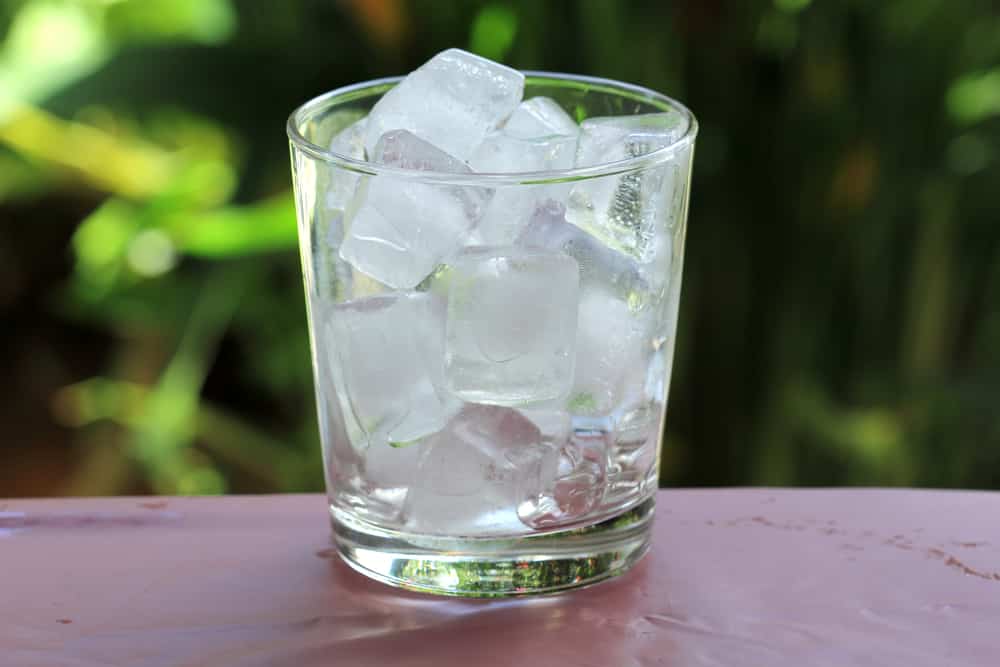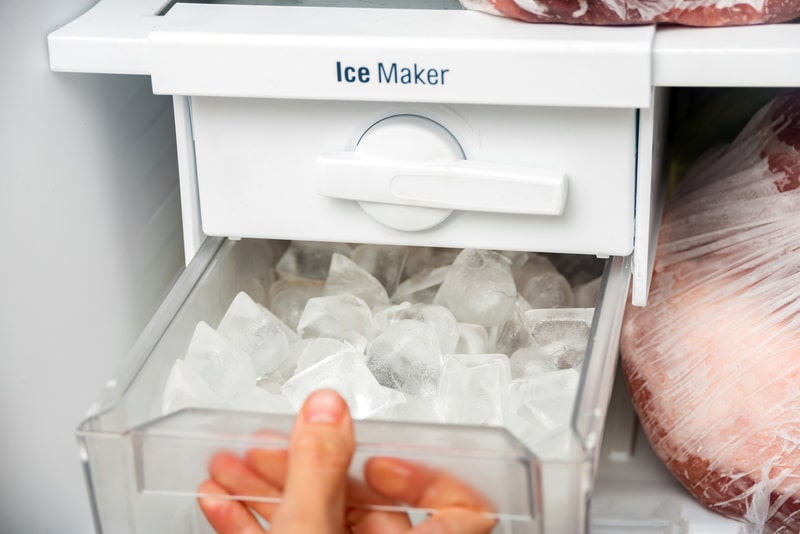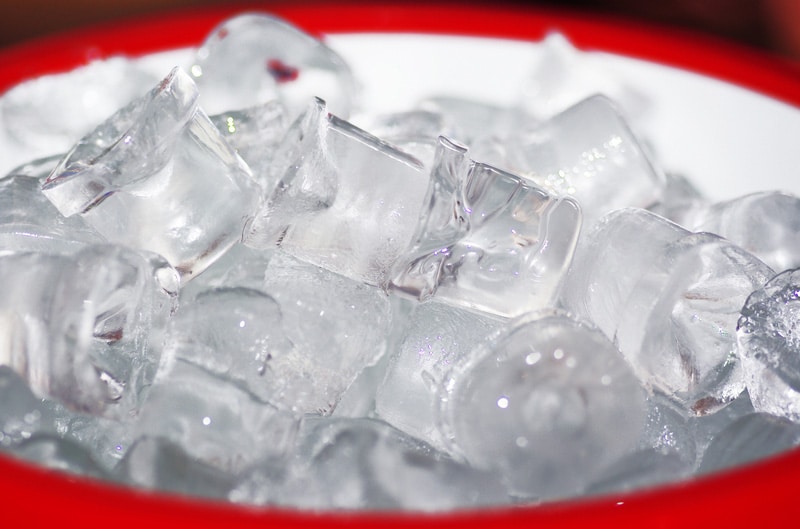
Ice cubes are extremely useful for a variety of purposes. They can be used to chill a glass of water or cooldrink, reduce swelling of a twisted ankle, and even increase blood circulation to give your face a radiant glow.
It’s very easy to make ice cubes; all you need is an ice maker or a freezer and some ice trays.
A freezer and ice tray are suitable for most people’s needs, though if you entertain a lot or have a big family you may want to consider purchasing an ice maker.
Ice makers churn out large quantities of ice much quicker than a freezer and ice trays can. Nowadays, many refrigerators come with built-in ice makers.
All you need to do is press your glass against the external flap on the fridge and ice comes pouring out!
White Residue from Ice Cubes
If you’re an avid icemaker you may have noticed that your ice cubes sometimes appear cloudy in the center and leave a white residue on the inside of the glass and ice trays. What is this white residue from?
There are natural minerals in most water sources, especially in tap water that has not been filtered. Water that has a high mineral content is generally referred to as “hard water”.
One of these minerals found in hard water is calcium carbonate. When water freezes into ice, the minerals and air bubbles are pushed away from it.
Since ice freezes from the outside inwards, the center of the ice cube is the last part of the cube to freeze. This means that all the minerals and air bubbles are pushed to the center of the ice cube.
The calcium carbonate in the center of the ice cube appears white in color when it freezes. Additionally, when the ice cube melts, the calcium carbonate can leave white marks on the inside of the glass.
Is It Harmful?
Calcium carbonate is only harmful in its concentrated form. This means that the small traces of calcium carbonate that you find in your tap water and ice cubes are not generally considered harmful to consume.
This being said, cloudy ice cubes and the white residue which remains in the glass are not particularly appealing. For this reason, you might want to consider taking steps to reduce the calcium carbonate levels in your drinking water.
What Can You Do About It?
There are several methods that you can follow to remove or reduce the calcium carbonate levels in the drinking water that you use to make ice cubes.
One solution is to install a filter. You can either purchase a filter that fits onto your tap or you can use a free-standing clay filter.
While a tap filter is convenient because it doesn’t involve refilling like a free-standing filter, you will need to change the filter on the tap every few months.
If you have hard water in your area, you might even need to change it more often. Filters can remove sediment and minerals from the water, leaving you with a safe drinking water supply.
If you suspect that the cloudiness in your ice cubes is due to tiny water bubbles rather than calcium carbonate, you can also deoxygenate the water before you freeze it.
Since oxygen solubility in water decreases as the temperate increases, you can boil the water that you intend to make ice cubes with to remove oxygen bubbles.
Then, allow the water to cool and pour it into your ice trays or ice maker. The resulting ice cubes should be fairly clear.
If you decide not to purchase a filter, it’s easy enough to clean the white residue left by calcium carbonate out of glasses, ice trays, or your ice maker. The white residue can be removed using water, soap, and a dish sponge.
If you are still struggling to remove the white residue, soak the glasses in a solution of water and vinegar. For every cup of water that you use, add two tablespoons of vinegar.
Since vinegar is acidic, it will effectively break down the white residue so that it wipes right off after about 15 minutes of soaking.
Remember to rinse the glasses after you’ve cleaned so that you don’t end up with a cocktail that tastes like vinegar and dish soap!


